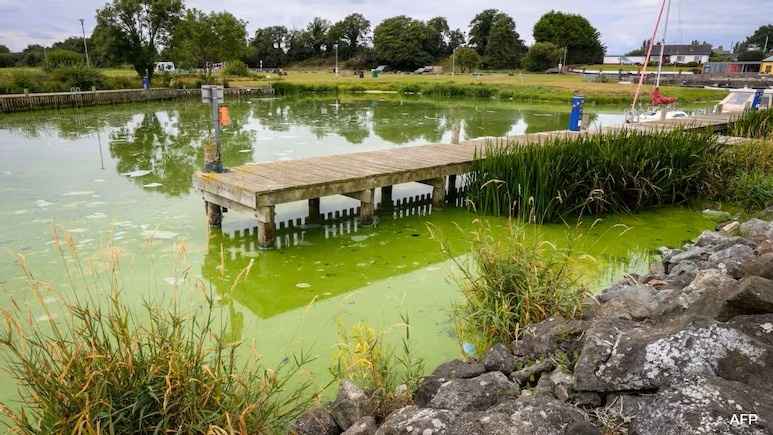Pea‑soup‑green waters and rotting‑egg smell cover Northern Ireland’s Lough Neagh again amid warning over health, wildlife, and water safety
For the third consecutive year, toxic blue-green algae blooms—described as looking like pea soup and smelling like rotten eggs—have engulfed much of Lough Neagh, the largest freshwater lake in the UK and Ireland. But this summer, the outbreak is worse than ever, according to residents living near the Northern Ireland landmark.
“The Lake Is Dying,” Say Locals
Local swimmer Mary O’Hagan described how the once-beautiful lake has turned dangerous. “Swimming here with its spectacular sunrises helped me when I was in a bad place in my life. It’s heartbreaking to see it now,” she said, speaking from Ballyronan, on the lake’s western shore.
O’Hagan, who suffers from chronic health issues and relied on open-water swimming, now avoids the lake due to safety concerns. She’s joined a growing campaign, “Save Lough Neagh,” demanding urgent government intervention.
What’s Causing the Algae Crisis?
Experts blame a combination of agricultural runoff, untreated sewage, and climate change for fueling the algae growth. Pollutants from large farms, particularly those linked to poultry giant Moy Park, are cited as major contributors. While Moy Park denies wrongdoing, locals say poor wastewater management and sewage spills are key factors behind the ecological disaster.
Additionally, the presence of invasive zebra mussels, which stimulate algae photosynthesis, is making the problem worse.
Impact on Nature and Local Life
- Fishing and water sports have been decimated.
- Bathing is banned across the 78-mile shoreline.
- Tourism is down as the foul smell drives visitors away.
- The lake’s fly population—a critical food source for fish and birds—has collapsed.
- Europe’s largest eel fishery on the lake suspended operations due to quality concerns.
Local fisherman Mick Hagan says he’s the first in generations not fishing eels in Lough Neagh. “This river used to be full of trout, but no longer,” he lamented.
Small Businesses Left Struggling
Entrepreneur Gavin Knox, who ran a paddleboard business on the lake, says bookings dried up due to the algae. “Doing business became impossible,” he said. “Even if there are safe places to paddle, nobody wants to do it when the fish are dying and the birds are covered in green slime.”
With no compensation or government support, Knox is struggling to repay his startup loan.
What Has the Government Done?
In July 2024, the Northern Ireland government announced an action plan to tackle the crisis, but less than half the promised measures have been implemented. Remaining steps are projected to stretch into 2026 and beyond.
Les Gornall, a local environmental expert known as “Doctor Sludge,” warned that with 40% of Northern Ireland’s drinking water coming from Lough Neagh, authorities might be forced to act if a health emergency arises.
“If Belfast suddenly cannot guarantee clean water, then there would be a property and tourism crash. Maybe that prospect will jolt them into fixing the lake,” he said.



